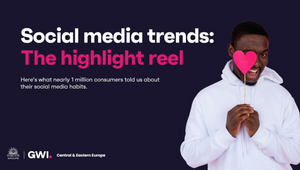
Minding the 'Content Gap' in Personalised Pharma Marketing Campaigns

There’s a growing gap between the number of personalised assets we need to optimise campaign effectiveness, and the number we can afford to produce with traditional methods. Today’s modern healthcare marketers need to adopt new approaches to efficiently define addressable audiences and capture more content to meet this growing need.
There are two key shifts in behaviour that can facilitate filling this content gap:
1. Use Data Engines to generate better audience insights – go beyond broad segments to deeply understand personal motivations and media behaviours and hone in on the most efficient, addressable targets
2. Use 'Supershoots' to produce content more efficiently – plan early for the full range of audiences and media possibilities, integrating them into bundled content production occasions using technology to maximise output at minimum cost
By thinking differently at these two critical phases of campaign development, we can 'mind the content gap' for personalisation at scale, without breaking the bank.
What exactly is a 'content gap'?
There’s a hazard every modern healthcare brand must face as they look to hop on board the express train to highly personalised HCP and DTC campaigns. With the growing ability to define and reach a wider range of audiences, using insights that allow us to increase the relevance of every asset, comes the need to create more content than ever before.
The ideal would be to produce unique assets for each audience segment based on their unique motivations, in different formats for each media platform they consume, in ways that can be easily adapted for different global markets. That means more personalisation to more audience segments, with more customisations on more platforms…the possibilities are endless. But, unfortunately, the budgets stay the same!
This creates a 'content gap' between the number of individualised assets we need to optimise campaign effectiveness and the number we can afford to produce – at least, if we stick with old methods of production. Fortunately, with the right strategic planning, production planning, and technology assistance, minding the content gap is now well within our sights.
How do I start to fill in the content gap for my healthcare brand?
The first question to ask is, how many audience segments do I really need to reach? “Just because you can, doesn’t mean you always should.” warns Chris Marshall, head of audience planning at Publicis Groupe. “The right question to ask is ‘What are the business and brand goals we need to accomplish, and what audiences do we need to create to reach them?’” But how do you determine the answer? Marshall and his team have turned that into a science.
Traditionally, audience targeting was a matter of robust segmentation studies that described broad, targetable demographic groups with attitudinal and behavioural similarities within the category. But these came with little insight on these segments as human beings. Marshall suggests, “The big change from 10 years ago is that now we can identify addressable audiences, not just segments, with a deeper understanding of sub-audiences that includes their motivations and media preferences, in and out of category.” It’s a 360-degree view of people that allows for analysis of where the real value in communications lies.
Where do better healthcare audience insights begin?
All this is thanks to new technology solutions, like the Publicis Data Engine run by the Data Science team, that compliantly combines two data universes: traditional clinical claims data from sources like NPI, and proprietary personal data from Epsilon – a resource with a 40-year history of expertise in human identities IRL. Algorithm-based, multivariate analysis can quickly cross reference these sources to identify addressable sub- audiences, with an unprecedented depth of knowledge about the “why,” not just the “who.”
“We not only know whether they watch more TV than social media, we know which networks and specific programs. We can also couple this with an understanding of what motivates behaviour for each, to inform better briefs,” explains Chris. He sees the future of brand campaigns beginning with a 'tree of briefs.' A core concept forms the trunk with branches for each sub-audience focused on specific evidence-based motivations and media platforms.
Ultimately, the goal is to code the content created for each audience so that it also contributes data back into the engine for further strategic refinement. The vision is clear: “We want the users of our content to help us learn how to become more and more relevant to themselves. They should also be contributors to optimising our communication effectiveness.”
Sounds like a lot of content to make! How can I afford it all?
Once you have identified as many variations of expression as you need (but as few as possible!), the next shift in behaviour is a re-evaluation of the way we create content itself. Obviously, the traditional process of setting up a 'shoot' to capture core campaign assets (usually TV for DTC or photography for HCP), with a couple of additional stills and some B-roll thrown in for good measure, is not going to cut it.
“It’s all about integrated planning,” says Mattison Becker, executive producer at Publicis Groupe. “We start thinking early about possibilities and don’t limit ourselves to one workstream. The more content we can integrate into each new ‘Supershoot,’ the farther we can stretch our client’s budget.”
The concept of the 'Supershoot' refers to integrated content creation for personalised campaigns that target multiple audiences, or that need to be adapted for multiple global markets. The content creation is envisioned not as a linear process (60’ TV leads to cut downs leads to photo stills), but rather as an interconnected matrix of demands that are met by a complex integration of simultaneous executions.
“Once we understand the range of deliverables, we plan for multiple cameras to capture different angles and display ratios that each platform demands,” Mattison explains. The complexity can also include multiple talent castings to cover global market adaptation, as well as carefully chosen locations that can accommodate all the necessary sites and talent variations.
Can’t technology make all this content creation easier?
Absolutely! The future holds even more potential for personalisation with projection mapping to insert different backgrounds for local relevance and even interactive greenscreening, a la Hollywood motion pictures, coming to a healthcare campaign near you. Not to mention the evolving role of AI content generation that will soon be incorporated in a compliant way to make virtual shoots more the norm than the exception.
“We learned a lot during Covid about virtual shoots that minimise travel without losing hands-on control. That’s contributing a lot of savings to the way we set up content creation in the future,” asserts Mattison.
Between integrated planning that anticipates all the potential content that can be squeezed in from the start, and the use of technologies that allow for even greater customisation in post-production, those endless possibilities we imagine are fast becoming a reality.
What’s more, with Supershoots, content can be created at 30%-50% less overall cost than multiple traditional shoots, when we factor in economies of scale. A shoot may go from four days to five, but it can eliminate additional shoots that would otherwise be needed down the line!
What’s the bottom line on minding the content gap?
With better audience insights in hand from the start, you can now make informed decisions about the right people to target and know exactly how many different expressions of your brand campaign are needed. Then, with the right advanced planning of a comprehensive and integrated Supershoot,” you can efficiently execute to cover all your content needs without breaking the budget.
For modern healthcare marketers, it’s easy to avoid the hazard of a 'content gap' while efficiently delivering more relevant campaigns than ever before.
Tyler Cunningham is global health vertical lead, PXP at Publicis Production
Image credit: Unsplash, Suad Kamardeen















